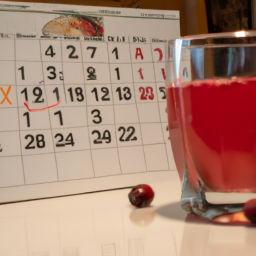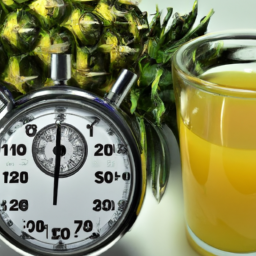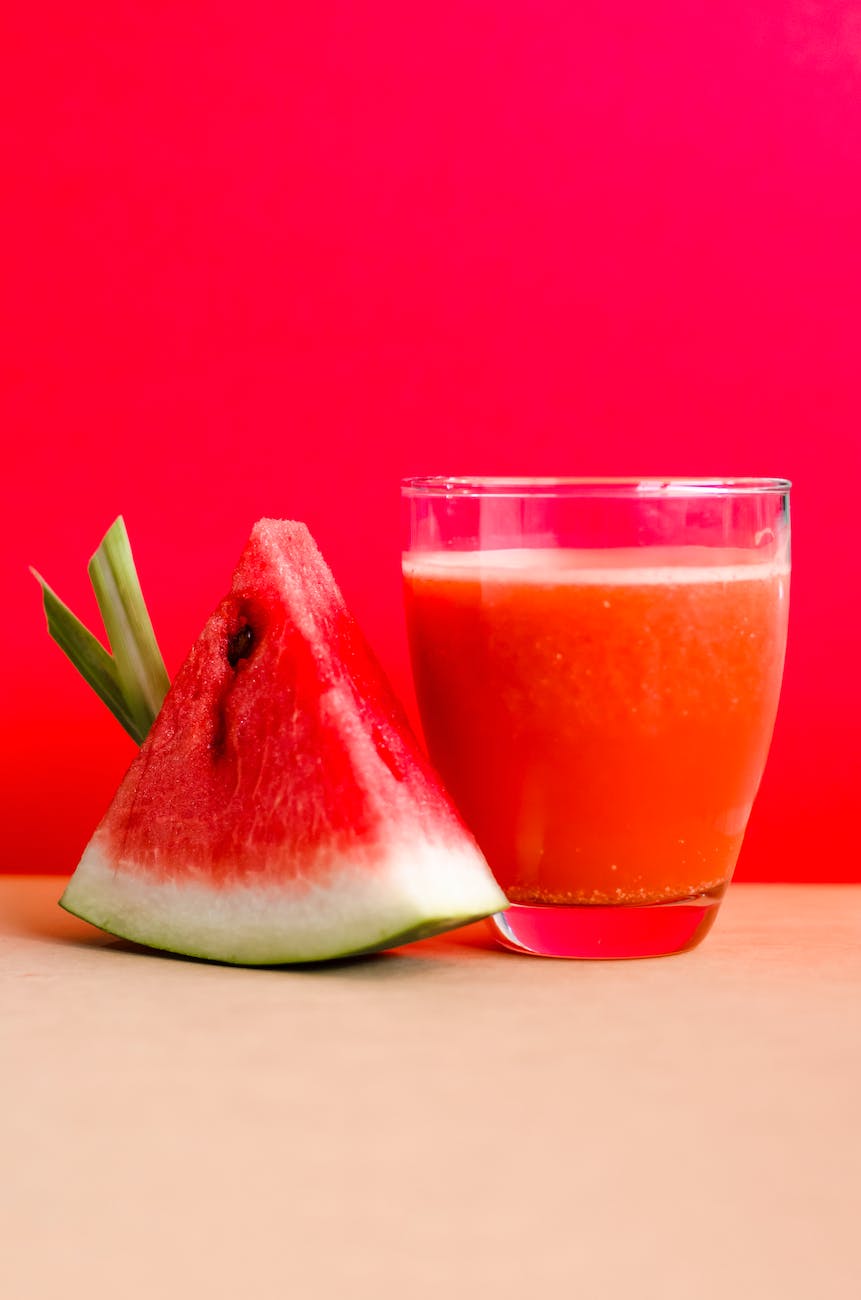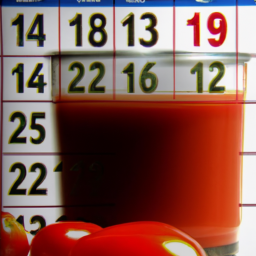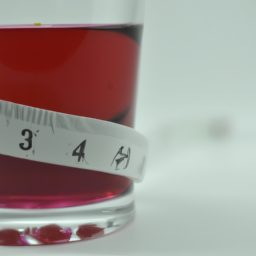As someone who enjoys drinking cranberry juice, I frequently find myself curious about its shelf life. It’s crucial for me to understand how long the juice will remain good, regardless of whether it’s an opened bottle or a carton that remains sealed and tucked away.
In this article, I will explore the shelf life of cranberry juice, proper storage techniques, and the various types of cranberry juice available in the market. Cranberry juice is a popular beverage that is enjoyed by many for its tart and refreshing taste. However, like any other food or drink, it has a limited shelf life.
Understanding how long cranberry juice can last is crucial to avoid wastage and ensure that you are consuming a safe and healthy product. In this article, I’ll be delving into the science behind cranberry juice’s shelf life and the various factors that can affect its longevity. From storage techniques to the different types of cranberry juice available, we’ll explore everything you need to know to keep your cranberry juice fresh and delicious.
So, let’s dive in!
Key Takeaways
- Unopened cranberry juice stored at room temperature can last up to 12 months.
- Opened cranberry juice stored in the fridge lasts for around 7-10 days.
- Proper storage techniques can extend the shelf life of cranberry juice.
- Sweetened, unsweetened, and cocktail blends are different types of cranberry juice available.
The Shelf Life of Cranberry Juice
Wondering how long your cranberry juice will last? Let’s talk about its shelf life!
Cranberry juice can last anywhere from a few days to several months, depending on various factors such as whether it’s been opened, the temperature it’s stored at, and whether it’s been refrigerated.
Unopened cranberry juice stored at room temperature can last for up to 12 months, whereas opened cranberry juice stored in the fridge will last for around 7-10 days. However, it’s important to note that these are just general guidelines and the actual shelf life of your cranberry juice may vary.
When cranberry juice does expire, it’s not necessarily harmful to consume, but it may have lost some of its nutritional value and taste. In fact, there are still some uses for expired cranberry juice, such as using it as a natural cleaning solution or adding it to homemade cranberry juice recipes for a tangy kick. However, if your cranberry juice has started to develop an off odor or color, it’s best to dispose of it.
Now that we’ve discussed the shelf life of cranberry juice, let’s talk about proper storage techniques to ensure it stays fresh for as long as possible.
Proper Storage Techniques
When it comes to storing cranberry juice, there are a few key points to keep in mind. First and foremost, refrigeration is essential to prolonging the shelf life of the juice.
In addition, freezing can be an effective way to extend the shelf life even further. Finally, it’s important to take steps to avoid contamination, such as using clean containers and practicing good hygiene.
By following these proper storage techniques, you can ensure that your cranberry juice stays fresh and safe to drink for as long as possible.
Refrigeration
Although it may seem obvious to some, refrigerating your cranberry juice will definitely help extend its lifespan and ensure it stays fresh for as long as possible. Proper refrigeration is key to preserving the quality of your cranberry juice and avoiding spoilage. It is recommended to store cranberry juice in the refrigerator at a temperature between 33°F and 40°F to maintain its freshness.
To understand how long cranberry juice lasts in the refrigerator, it’s important to consider the expiration date and how long it has been opened. The table below shows the estimated lifespan of cranberry juice in the refrigerator based on its expiration date and the date it was opened.
| Expiration Date | Unopened Cranberry Juice | Opened Cranberry Juice |
|---|---|---|
| Before date | Up to 2 weeks | Up to 1 week |
| 1-2 days after date | Up to 2 weeks | Up to 1 week |
| 1 week after date | Up to 2 weeks | Up to 1 week |
| 2 weeks after date | Up to 1 week | Up to 1 week |
| Expired | Cranberry juice is spoiled | Cranberry juice is spoiled |
Although refrigeration is crucial to preserving the shelf life of cranberry juice, there are other ways to extend its lifespan. Freezing, for instance, is a great option for those looking to store cranberry juice for an extended period of time.
Freezing
If you want to make your cranberry juice last even longer, you can freeze it! Freezing is an excellent method to extend the shelf life of your cranberry juice. The process of freezing slows down the growth of bacteria and other microorganisms that cause spoilage.
When you freeze cranberry juice, it can last for up to a year or more in the freezer. There are many benefits of freezing cranberry juice. Firstly, you can stock up on cranberry juice during the holiday season when it’s readily available and freeze it for later use. Secondly, freezing cranberry juice allows you to use it in a variety of recipes. You can add frozen cranberry juice to smoothies, cocktails, and even sauces.
So, if you want to enjoy cranberry juice throughout the year, freezing is an excellent option. In the next section, I’ll discuss how to avoid contamination when handling cranberry juice.
Avoiding Contamination
To keep your cranberry juice fresh and safe to drink, you should always take precautions to avoid contamination. Contamination prevention is crucial to ensuring the safety of your cranberry juice. This includes washing your hands before handling the container, using clean utensils to pour the juice, and keeping the container tightly sealed when not in use.
To further prevent contamination, it is important to be aware of the expiration date and storage recommendations on the container. Cranberry juice that has gone bad can harbor harmful bacteria and cause illness. Therefore, it is important to discard any juice that has passed its expiration date or shows signs of spoilage, such as a foul odor or unusual color. By practicing safe handling and proper storage techniques, you can enjoy fresh and safe cranberry juice for a longer period of time.
Moving on to the next section about ‘types of cranberry juice’, it is important to note that the type of cranberry juice you choose can also affect its shelf life and safety.
Types of Cranberry Juice
There’s nothing quite like a refreshing glass of cranberry juice, especially when you can choose from different types like sweetened, unsweetened, and cocktail blends. Each type of cranberry juice has its unique taste, nutritional content, and optimal use in cocktail recipes.
Sweetened cranberry juice is ideal for those who prefer a sweeter taste, while unsweetened juice is perfect for those who want to avoid added sugars. Cocktail blends are a mix of cranberry juice and other fruit juices, which can enhance the flavor of the drink.
When it comes to nutritional content, all types of cranberry juice are high in vitamin C and antioxidants, which are essential for maintaining good health. Unsweetened cranberry juice has fewer calories than sweetened or cocktail blends, making it an excellent choice for those watching their weight.
On the other hand, cocktail blends can be a great way to incorporate other fruits into your diet while still enjoying the taste of cranberry juice.
As we explore the health benefits of cranberry juice, we’ll see how these different types of juice can have different effects on the body.
Health Benefits of Cranberry Juice
After discussing the different types of cranberry juice, let’s now delve into the health benefits of this tart drink. As someone who enjoys drinking cranberry juice regularly, I’m interested in knowing its nutritional content and potential side effects.
-
Nutritional content: Cranberry juice is a rich source of vitamin C, essential for immune function and skin health. It also contains antioxidants like flavonoids and phenolic acids, which may help protect against cancer and heart disease. Additionally, cranberry juice is low in calories and sugar, making it a great option for those watching their weight or sugar intake.
-
Potential side effects: While cranberry juice is generally safe for most people to consume, there are a few potential side effects to be aware of. Drinking too much cranberry juice may cause stomach upset or diarrhea, as it contains high levels of acid. Additionally, some people may be allergic to cranberries and should avoid consuming them.
-
Urinary tract health: One of the most well-known benefits of cranberry juice is its ability to prevent and treat urinary tract infections (UTIs). The proanthocyanidins in cranberries may help prevent bacteria from adhering to the bladder wall, reducing the risk of infection.
-
Anti-inflammatory effects: Cranberry juice may also have anti-inflammatory effects, which can help reduce the risk of chronic diseases like arthritis and heart disease.
Understanding the nutritional content and potential side effects of cranberry juice is important for anyone who regularly consumes this drink. In the next section, we’ll discuss the importance of reading labels when purchasing cranberry juice products.
The Importance of Reading Labels
Make sure you read the labels on cranberry juice products, as it’s important to know what ingredients and nutritional content you’re consuming. Label reading benefits the consumer by providing them with information about what they are consuming. It’s essential to be aware of the ingredients listed on the label, as some people may be allergic to certain components or have dietary restrictions. Additionally, the label provides information about the nutritional content, including calories, sugar, and sodium. This information can be used to make informed decisions about the amount of juice to consume.
To help you understand how to read a label, here is a table that breaks down the information typically listed on a cranberry juice label:
| Nutritional Information | Per Serving | % Daily Value |
|---|---|---|
| Calories | 100 | 5% |
| Total Fat | 0g | 0% |
| Sodium | 10mg | 0% |
| Total Carbohydrate | 25g | 8% |
| Total Sugars | 20g | N/A |
By reading the label, you can see that one serving of cranberry juice contains 100 calories and 20 grams of sugar. This information can be helpful for those who are watching their sugar intake or trying to maintain a certain number of calories. Consumer awareness is essential when it comes to food products, and reading labels is an easy way to stay informed about what you’re consuming.
With this knowledge in mind, let’s explore how cranberry juice can be used in cooking.
Cooking with Cranberry Juice
As we’ve discussed earlier, reading labels is crucial in determining the shelf life of cranberry juice. However, aside from drinking it as a refreshing beverage, cranberry juice can also be used in cooking and mixology.
One way to incorporate cranberry juice in cooking is by using it as a marinade. The acidic content of cranberry juice helps to tenderize meat and adds a tangy flavor to it. It works well with poultry, beef, and pork. When using cranberry juice as a marinade, it’s important to note that it shouldn’t be left for too long as the acid can cause the meat to break down.
Another way to use cranberry juice is by adding it to cocktails. It gives a fruity and tart flavor that complements well with other ingredients. Cranberry juice is often used in popular cocktails such as Cosmopolitan, Cape Codder, and Sea Breeze.
As we explore alternatives to cranberry juice, it’s important to note that there are several other fruits that can be used in its place. These fruits may offer similar health benefits and flavor profiles. Let’s delve deeper into these alternatives in the next section.
Alternatives to Cranberry Juice
Oh, you’re just dying to know what other fruits you can use instead of cranberry juice, aren’t you? Well, lucky for you, there are plenty of options out there that’ll give you the same tangy kick without sacrificing flavor or health benefits. Here are three great substitutes for cranberry juice:
-
Pomegranate Juice: Similar to cranberry juice, pomegranate juice is tart and slightly sweet. It’s also packed with antioxidants and has been shown to improve heart health and lower inflammation.
-
Tart Cherry Juice: Tart cherry juice has a similar flavor profile to cranberry juice and is also high in antioxidants. It has been shown to reduce inflammation and improve sleep quality.
-
Grapefruit Juice: Grapefruit juice has a tangy, slightly bitter taste that is similar to cranberry juice. It’s also high in vitamin C and has been shown to aid in weight loss.
While cranberry juice is a popular choice for its health benefits, there are plenty of other options out there that can provide similar benefits. In fact, cranberry supplements are often recommended as an alternative for those who don’t like the taste or want to avoid the added sugar in cranberry juice. These supplements can help prevent urinary tract infections and improve heart health. However, it’s important to talk to your doctor before starting any supplement regimen.
Moving on to the next section about sustainability and cranberry juice production, it’s important to consider how our consumption of cranberry juice affects the environment and the communities that produce it.
Sustainability and Cranberry Juice Production
When it comes to cranberry juice production, sustainability is a crucial factor that can’t be overlooked.
As a consumer, I’m concerned about the environmental impact of cranberry farming and the practices used by companies manufacturing cranberry juice.
However, I’m glad to know that there are sustainable cranberry juice brands that prioritize eco-friendly practices and ethical sourcing of ingredients.
Environmental Impact of Cranberry Farming
The impact of cranberry farming on the environment is a topic worth exploring, especially when considering the demand for cranberry juice. Cranberry farming requires a significant amount of water usage, which can lead to water depletion and soil erosion. In addition, pesticides are often used to protect the cranberry plants from pests and diseases, which can have harmful effects on the local ecosystem.
To better understand the environmental impact of cranberry farming, let’s examine a table that outlines the water usage and pesticide use for a typical cranberry farm:
| Environmental Impact | Cranberry Farming |
|---|---|
| Water Usage | 300-400 gallons per minute per acre |
| Pesticide Use | 22-46 pounds per acre |
As you can see, cranberry farming requires a large amount of water and pesticides, which can have negative effects on the environment. However, there are sustainable cranberry juice brands that prioritize environmentally-friendly farming practices, which we will explore next.
Sustainable Cranberry Juice Brands
You’ll be pleased to know that there are sustainable cranberry juice brands that prioritize environmentally-friendly farming practices, such as Ocean Spray. This brand has reduced its carbon footprint by 20% and aims to be powered by 100% renewable energy by 2040.
Here are four reasons why sustainable cranberry juice brands, like Ocean Spray, are worth considering:
-
Sourcing practices: Sustainable cranberry juice brands prioritize responsible sourcing practices that ensure the health and wellbeing of the environment and the local communities where the berries are grown.
-
Fair trade: These brands work closely with farmers to ensure fair wages and ethical treatment of workers, which helps to support local economies and promote social justice.
-
Reduced environmental impact: Sustainable cranberry juice brands have implemented practices that reduce their environmental impact, such as using renewable energy, reducing waste, and conserving water.
-
High-quality products: Because sustainable cranberry juice brands prioritize responsible farming practices, their products are often of higher quality and taste better than those that come from less sustainable sources.
Sustainable cranberry juice brands are a great option for those who are environmentally conscious and want to support fair and ethical farming practices.
Now, let’s explore some common myths and facts about cranberry juice.
Cranberry Juice Myths and Facts
As a nutritionist, I often get asked about the supposed benefits of cranberry juice, particularly in relation to urinary tract infections (UTIs) and weight loss.
While some studies have suggested that cranberry juice may have a protective effect against UTIs, the evidence is not conclusive.
Similarly, while cranberry juice is low in calories and may be a useful part of a weight loss diet, it is not a magic solution and should be consumed in moderation as part of an overall healthy diet and lifestyle.
Does Cranberry Juice Cure UTIs?
If you’re looking for a natural remedy for UTIs, cranberry juice may be worth considering. While some people swear by its effectiveness, medical research on the topic is mixed.
Here are a few things to keep in mind:
- Cranberry juice may help prevent UTIs by preventing bacteria from adhering to the bladder wall.
- However, once you already have a UTI, drinking cranberry juice is unlikely to cure it.
- Drinking cranberry juice in large amounts can also lead to stomach upset, so it’s important to consume it in moderation.
While cranberry juice may not be a cure-all for UTIs, it’s still a potential tool for UTI prevention.
Now, let’s move on to the question of whether cranberry juice can help with weight loss.
Can Cranberry Juice Help with Weight Loss?
Now that we have explored the potential benefits of cranberry juice in treating UTIs, let’s take a look at another possible benefit – weight loss. As someone who is always trying to maintain a healthy weight, I was curious to find out if cranberry juice could help.
Some studies have suggested that consuming cranberry juice may aid in weight loss by boosting metabolism and increasing hydration levels. In fact, a 2015 study published in the Journal of Nutrition found that drinking cranberry juice led to a significant increase in resting metabolic rate in overweight and obese individuals. Additionally, the high water content in cranberry juice may help to keep you feeling fuller for longer, reducing the likelihood of overeating. To further illustrate this point, let’s take a look at the following table:
| Cranberry Juice | Watermelon | Grapes | Apples | Oranges |
|---|---|---|---|---|
| 91% water | 92% water | 82% water | 84% water | 87% water |
As you can see, cranberry juice has a high water content compared to other fruits commonly used for weight loss. This means that incorporating cranberry juice into your diet could potentially aid in weight loss efforts by increasing hydration levels and promoting feelings of fullness. However, it’s important to note that while cranberry juice may have some benefits in terms of weight loss, it should not be relied upon as a sole method for weight management. A balanced diet and regular exercise are still the most effective ways to achieve and maintain a healthy weight.
Frequently Asked Questions
Can I drink expired cranberry juice?
I wouldn’t recommend drinking expired cranberry juice for safe consumption. There are alternatives to consider, such as purchasing a new bottle or trying a different juice option. It’s important to prioritize your health when it comes to consuming expired products.
How long does homemade cranberry juice last?
To maximize the shelf life of homemade cranberry juice, it is important to use proper preservation methods such as canning or freezing. Store in airtight containers and refrigerate for up to 3-5 days or freeze for up to six months.
Can I freeze cranberry juice?
Freezing cranberry juice is a great way to extend its shelf life and reap its benefits for longer. The process involves pouring the juice into airtight containers or freezer bags and storing them in the freezer.
Does cranberry juice lose its health benefits over time?
Preservatives in cranberry juice can affect its health benefits over time. Processing can also reduce the nutrient content. It’s best to consume fresh cranberry juice within a few days of making it.
How much cranberry juice should I drink per day?
Did you know that just one cup of cranberry juice contains 31% of the recommended daily intake of vitamin C? As for how much to drink per day, studies suggest 8-16 ounces for potential health effects on urinary tract infections and gut microbiota.
Conclusion
In conclusion, the shelf life of cranberry juice varies depending on the type and storage techniques used. As someone who enjoys the health benefits of cranberry juice, I make sure to read labels and store my juice properly to ensure maximum freshness and flavor.
One time, I left a bottle of cranberry juice in my fridge for over a month and when I finally opened it, the taste was off and the color had darkened. This experience taught me the importance of checking expiration dates and not letting my juice sit for too long.
Data shows that the global cranberry juice market is expected to continue growing in the coming years, with increasing demand for healthy beverages and natural remedies. However, it’s important to consider the sustainability of cranberry production and look for responsibly sourced products.
Overall, cranberry juice is a versatile and nutritious drink that can be enjoyed in a variety of ways. By understanding its shelf life and proper storage techniques, we can fully appreciate the benefits of this delicious beverage.
Ilana has been a vegan for over 10 years. She originally made the switch for health reasons, but soon found herself becoming more and more passionate about the ethical and environmental implications of a vegan lifestyle. Ilana is the author of The Graceful Kitchen, a blog all about veganism. She loves to cook up delicious and nutritious vegan meals, and share her recipes with others who are interested in leading a cruelty-free life. Ilana is also a strong advocate for using whole foods as the foundation of a healthy diet, and believes that going vegan is one of the best ways to achieve this.
